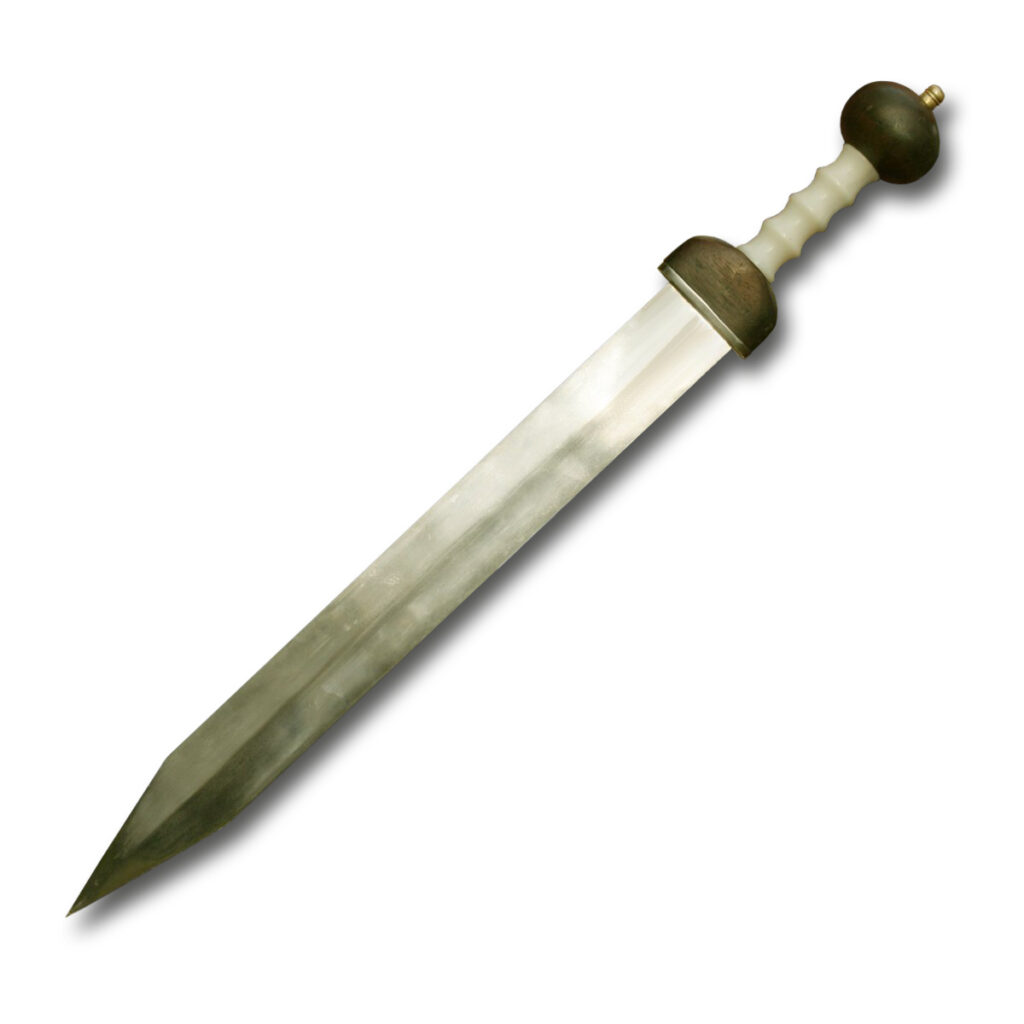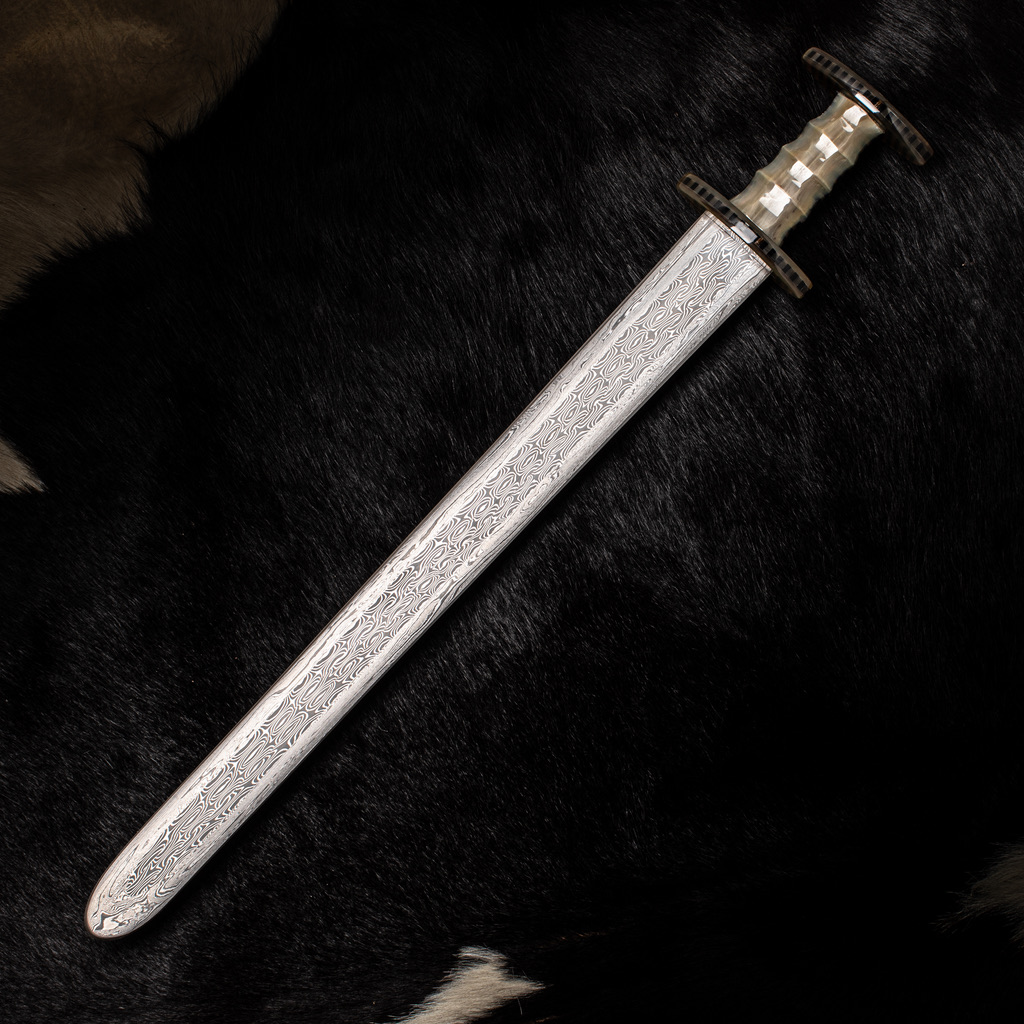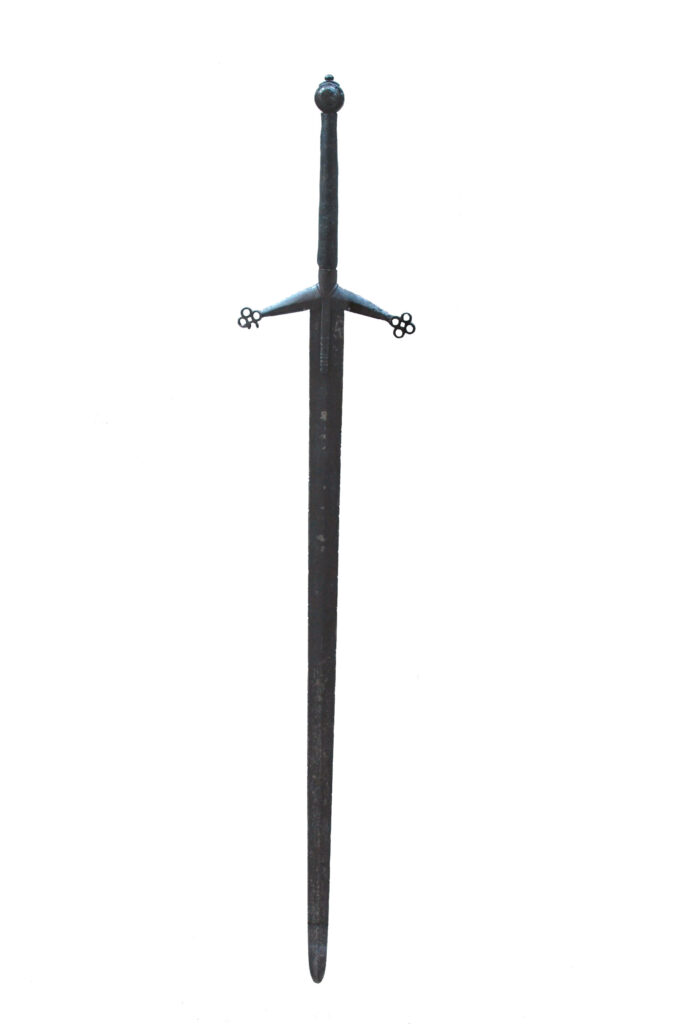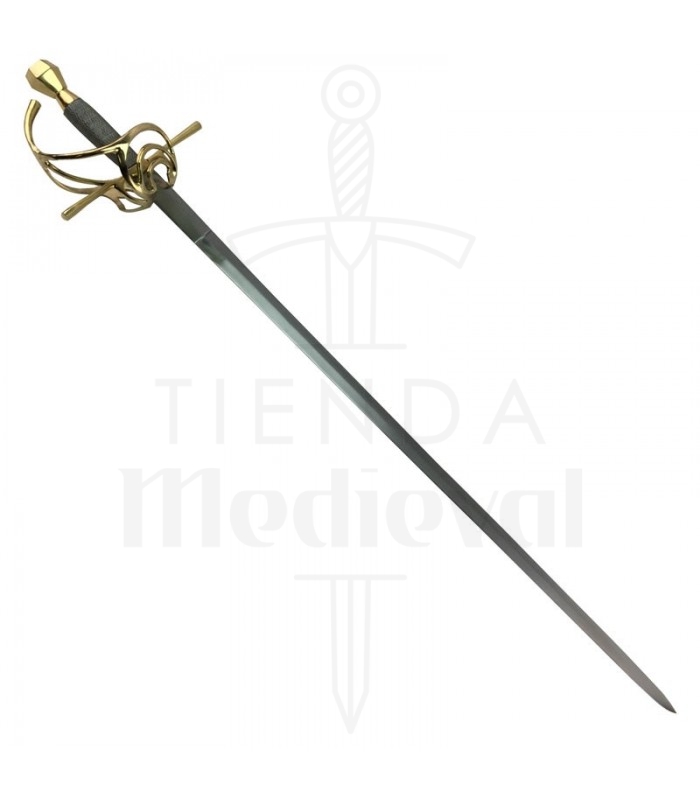Sword Stories

The Gladius
The gladius was a short Roman sword used for thrusting, particularly by the legions of the Republic and early Empire. Roman legionaries used it as part of the weapon set that included their scutum (shield) and pilum (javelin). The blades were steel or case-hardened iron. Very rarely the blades were composites of iron and steel. The Roman army made these in vast numbers, the work probably being commissioned to retired soldiers (gladiarii). Being mass produced, and with Roman smiths not completely understanding the properties of iron, the weapons were often of mediocre quality. But there were always replacement weapons to be had.

Anglo saxon/Viking sword
The swords of the Anglo-Saxon and Viking eras were developed from the spatha, the long cavalry sword of the Roman auxiliary. These swords were used for hand-to-hand fighting in the melee after the shieldwall broke . The early Saxon and Viking smiths took pattern welding to dizzying new heights, making some of the finest blades ever forged.
However, with the arrival of massed Viking armies from the 10th century onwards, sword quality declined markedly. There were simply too many swords required to devote the thousands of man hours required to forge the best weapons, although the Ulfberht swords, made and signed by a family of smiths in the 9th and 10th centuries, were an exception to the trend towards mediocrity: they remain unparalleled.

Claymore
The famous claymore sword was a two-handed broadsword. It was wielded mostly in Scotland during the incessant clan and border warfare between 1400 and 1700. A later weapon, a smaller basket hilted sword, also came to be known as a claymore, but this was a later sword. The terminology is confusing as is often the case with swords. But here I am talking about the early claymore.
The two-handed claymore was a constant in the medieval wars between England and Scotland, as well as being wielded in internal Scottish clan fights. Being a two-handed weapon, the claymore had a unique style of fighting associated with it, utilising the long, heavy blade, the cross guards to trap and break enemies’ blades and the heavy pommel to strike. The sword could also be easily reversed to make a very effective hooking weapon.

Rapier
The rapier, a long, one-handed, thrusting weapons, was not primarily a soldier’s sword. The rapier developed in the 16th and 17th centuries largely as a civilian self-defence weapon. As such, it was a personal sword, carried every day, and one meant to be used in the brawls, fights and duels that plagued Renaissance Europe’s cities. The rapier required a fighting style based on thrusting rather than slashing – modern sport fencing styles have developed from rapier duelling.

Sabre
The popular image of the sabre is a sword with a curved, single-edged blade, used by cavalrymen, in particular during the Napoleonic Wars. The image, depicted in many illustrations of the time, was of horsemen slashing with their sabres, often with devastating effect, on routing infantry formations. But in fact, Napoleonic era sabres were just as often straight blades, used for thrusting attacks by charging cavalry. The sabre remains part of the dress uniform of many military units, while modern sport sabre fencing is alone in counting slashing strokes as hits, although the sword itself is straight, not curved.
0 Comments